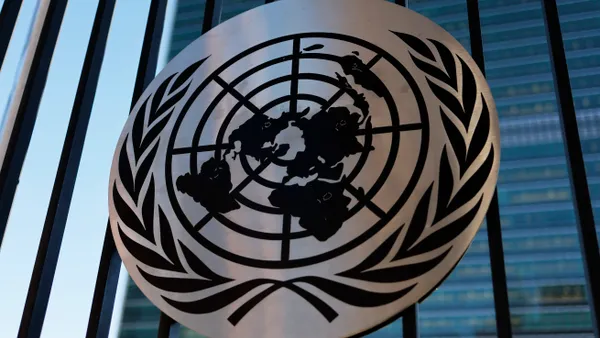The United Nations Environment Program (UNEP) wants countries to collectively commit to cut 42 per cent off annual greenhouse gas emissions by 2030 and 57 per cent by 2035 in the next round of Nationally Determined Contributions (NDCs).
While releasing the Emissions Gap Report 2024, UNEP Executive Director Inger Andersen urged nations to act “or the Paris Agreement’s 1.5°C goal will be gone within a few years.”
The updated NDCs are expected to be submitted early next year ahead of the COP30 climate talks in Brazil, nations are being asked to increase ambition in the new NDCs and start delivering immediately, adding that a temperature increase of 2.6 to 3.1°C over the course of this century, would bring debilitating impacts to people, planet and economies.
“Nations must close huge emissions gap in new climate pledges and deliver immediate action, or 1.5°C lost,” says the UNEP Executive Director when she officially launched the report during the 16th Conference of Parties on Biological Diversity.
Getting to the 1.5°C goal, according to UNEP is technically possible if only with a G20-led massive global mobilization to cut all greenhouse gas emissions.
Several scenarios are at play, the 2.6°C scenario is based on the full implementation of current unconditional and conditional NDCs. Implementing only current unconditional NDCs would lead to 2.8°C of warming while continuing with current policies would lead to 3.1°C of warming.
Additional net-zero pledges to full implementation of unconditional and conditional NDCs could limit global warming to 1.9°C, but warns that there is currently low confidence in the implementation of these net-zero pledges.
“Climate crunch time is here. We need global mobilization on a scale and pace never seen before – starting right now, before the next round of climate pledges – or the 1.5°C goal will soon be dead and well below 2°C will take its place in the intensive care unit,” said UNEP Executive Director Inger Andersen and added, “I urge every nation: no more hot air, please. Use the upcoming COP29 talks in Baku, Azerbaijan, to increase action now, set the stage for stronger NDCs, and then go all-out to get on a 1.5°C pathway.”
“Even if the world overshoots 1.5°C, we must keep striving for a net-zero, sustainable and prosperous world. Every fraction of a degree avoided counts in terms of lives saved, economies protected, damages avoided, biodiversity conserved and the ability to rapidly bring down any temperature overshoot,” she notes.
The report shows that there is technical potential for emissions cuts in 2030 of up to 31 gigatons of carbon dioxide equivalent, which is around 52 per cent of emissions in 2023 and 41 gigatons in 2035. This would bridge the gap to 1.5°C in both years, at a cost below US$200 per ton of carbon dioxide equivalent.
Increased deployment of solar photovoltaic technologies and wind energy could deliver 27 per cent of the total reduction potential in 2030 and 38 per cent in 2035. Action on forests could deliver around 20 per cent of the potential in both years. Other strong options include efficiency measures, electrification and fuel switching in the buildings, transport and industry sectors.
This potential illustrates it is possible to meet the COP28 targets of tripling renewable energy capacity by 2030, doubling the global average annual rate of energy efficiency improvements by 2030, transitioning away from fossil fuels, and conserving, protecting and restoring nature and ecosystems.
However, all the measures call for international mobilization and a whole-of-government approach, focusing on measures that maximize socioeconomic and environmental co-benefits and minimize trade-offs.
A minimum six-fold increase in mitigation investment is needed for net-zero, this should be backed by reforms in the global financial architecture, strong private sector action and international cooperation.
The estimated incremental investment for net-zero is between US$0.9 to US$2.1 trillion per year from 2021 to 2050.
The report further shows that the G20 members, responsible for the bulk of total emissions, minus the African Union member states, accounted for 77 per cent of emissions in 2023, yet they remain off track to meet current NDCs. “The largest-emitting members will need to take the lead by dramatically increasing action and ambition now and in the new pledges,” the report further indicates.
The scientists insist that the NDCs must include all gases listed in the Kyoto Protocol, cover all sectors, set specific targets, be explicit about conditional and unconditional elements and provide transparency around how the submission reflects a fair share of effort and the highest possible ambition.




